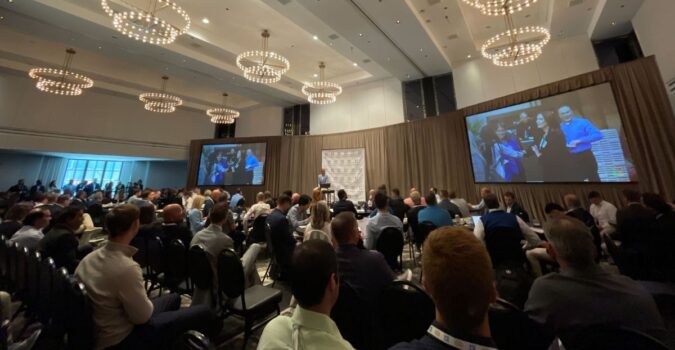We do something strange at LaunchPad Lab. We encourage employees to work on side projects through our SPACE program. While most companies think of side projects as distractions, we give employees time to work on them. The reason is simple: Side projects are where the interesting stuff happens. They are the best way to expand technical knowledge, try new things, and make big discoveries.
When I came home from work, I kept doing electronics anyway.
— Steve Wozniak, Founders at Work
Maybe you’re itching to work on an interesting side project this year. But how will you find time? One of our developers, Wade, recently asked this question in our team’s Know Your Company.
Here are some of the great answers our team had.
Keep your energy up
The first trick is to keep your energy levels up throughout the day. A lot of us like to work on side projects early in the morning or after work. You won’t get much done if you’re passed out on the couch by 7:00 pm. You’ll have a lot more energy if you limit your caffeine, sugar, and simple carbs throughout the day. Getting some exercise also helps a lot.
Keep a list of projects
Now that you’re awake and alert, you want to have projects on hand for when you have time to work on them. You don’t want to waste time deciding what to work on.
Most people on our team keep a list of their projects. Trello, Basecamp, and Wunderlist are all great tools to help keep projects organized. Keeping your active project list up-to-date makes it much easier to be productive.
Focus
Don’t let yourself get interrupted. An interrupted task is estimated to take twice as long and contain twice as many errors as uninterrupted tasks. If you only have a couple hours per week, you want to make sure you’re 100% focused during that time without interruption. Get out of the house and go somewhere quiet if you need to.
Where and when to work
Many of us take the train to work. The train turns out to be an ideal place to get work done. It’s quiet and offers a set amount of time (around an hour for most of us) to get as much done as possible. This combination of a quiet environment and a fixed amount of time is great for productivity.
Turn off your TV
This should be obvious, but you should really limit or eliminate TV. It seems like everyone is super busy and doesn’t have time for anything. Yet we’re all talking about the 8 hours of football we watched over the weekend, the 4-hour Bachelor marathon, and the latest Netflix show we binged on. On average, Americans watch 5 hours of TV per day and spend a total of 9.5 hours consuming media across devices. No wonder we don’t have time for anything.
Ignore the news
Don’t read or watch the news. Keeping up with the latest “news” is a huge time suck and rarely contains actual news. If something is important enough, you’ll hear about it. If you feel like you need to stay informed about a topic, you’ll learn a lot more by reading a good book or magazine about it.
Know your stack
Everyone has their favorite set of tools to use for new projects. These are tools that we’ve used a bunch, so there’s minimal setup required to get going. Paul mentioned that he uses Hubspot CRM, Feedly, Buffer, and Github Pages to get projects up and running quickly. I like to get going quickly by getting organized on a new Trello board and firing up a new Rails app.
Track your time
Tracking your time helps to hold yourself accountable. Even though side projects aren’t billable, it’s nice to be able to look back and see where you’ve spent your time. Time tracking apps like Harvest or Toggl are easy to use and have free tiers.
Don’t break the chain
Jerry Seinfeld’s secret to productivity is to put an X on the calendar each day he finishes his task. The key is to create a chain of X’s and never to break that chain. There are a lot of great apps that use this method to help keep you motivated. Check them out and start a chain to work on your side project a little bit everyday.



